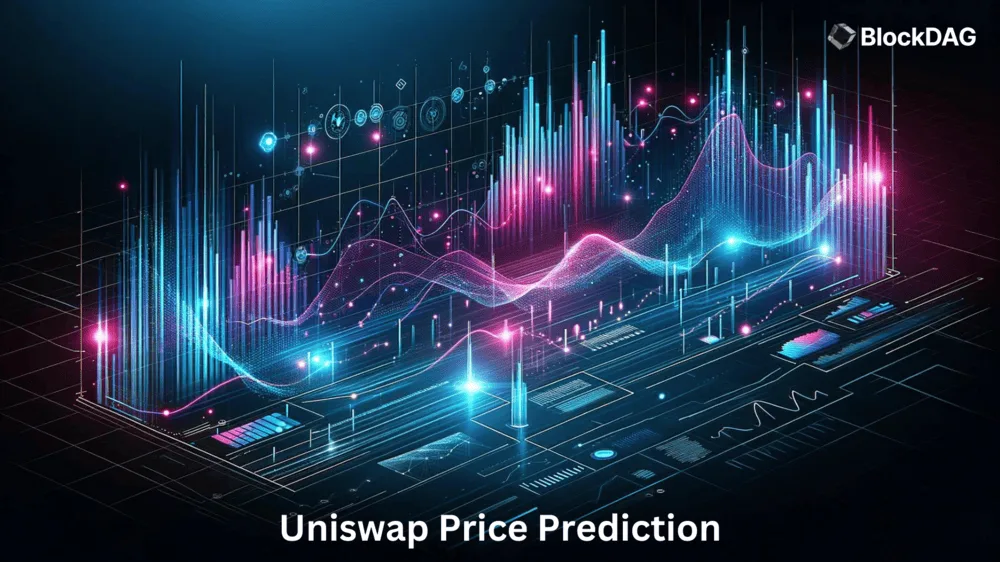
As the decentralized finance (DeFi) ecosystem continues to mature, the role of protocols like Uniswap becomes more vital, not only for liquidity provision and token swaps but also as a cornerstone in the emerging world of on-chain identity. While Uniswap price prediction often revolve around technical and fundamental metrics, the growing relevance of identity on the blockchain introduces a new dimension to its long-term value proposition. This article explores the future of Uniswap in relation to on-chain identity and provides insights into its potential price changes.
Understanding Uniswap’s Core Role
Uniswap is the largest decentralized exchange (DEX) built on Ethereum, known for its automated market maker (AMM) model. Rather than using traditional order books, Uniswap enables token swaps through liquidity pools, with pricing determined by smart contract algorithms. It allows anyone to trade ERC-20 tokens or provide liquidity, earning fees in return. Its governance is controlled by holders of the UNI token, a governance token that gives users the ability to propose and vote on changes to the protocol.
As of early 2025, Uniswap processes billions in daily trading volume and continues to be a DeFi benchmark. But beyond trading, it may soon become an integral player in the next wave of blockchain innovation: decentralized identity.
The Rise of On-Chain Identity
Blockchain identity solutions aim to give users more control over their digital presence. In contrast to Web2 platforms—where user data is siloed, monetized, and vulnerable to breaches—on-chain identity allows individuals to own, manage, and verify their credentials through decentralized systems.
Protocols like Ethereum Name Service (ENS), Worldcoin, and Lens Protocol are already pioneering decentralized identities. But they still need a ubiquitous point of interaction—where identity, value, and governance intersect. This is where Uniswap’s role becomes fascinating.
Uniswap as a Hub for On-Chain Identity
Uniswap Labs has already hinted at incorporating user identity frameworks through tools like Uniswap Wallet, which supports swaps, NFTs, and wallet creation in one sleek interface. With regulatory scrutiny increasing and the need for more personalized DeFi experiences, Uniswap could evolve into a gateway for verified on-chain identities. For instance:
- Permissioned Pools: Certain pools may require verified identities to participate, especially for institutions or real-world asset tokenization.
- Reputation-Based Incentives: Users with a strong on-chain identity may receive better fee structures, airdrops, or access to exclusive governance votes.
- Compliance Without Custody: Uniswap can implement identity solutions that allow for regulatory compliance (e.g., KYC/AML) without sacrificing decentralization or user control.
If Uniswap becomes a leader in identity-enabled DeFi, it could unlock a new class of users—institutions, governments, and mainstream consumers—driving adoption and, consequently, demand for the UNI token.
Price Prediction Scenarios
Let’s explore a few potential price prediction scenarios for UNI based on adoption of on-chain identity and broader market trends:
1. Conservative Scenario (2025–2027)
- Assumptions: Modest growth in DeFi, limited integration of identity, macro uncertainty.
- UNI Price Range: $8–$15
Uniswap continues to dominate DeFi but doesn’t fully capitalize on identity. Its governance token sees moderate appreciation due to steady trading volumes and ecosystem upgrades.
2. Bullish Scenario (2025–2027)
- Assumptions: Widespread integration of on-chain identity, mainstream DeFi adoption, regulatory clarity.
- UNI Price Range: $25–$40
Uniswap becomes the go-to DEX for compliant DeFi, enabling verified institutional trading. Identity-linked airdrops and incentives boost token utility. UNI appreciates significantly as governance grows more valuable.
3. Ultra-Bull Case (2027–2030+)
- Assumptions: Decentralized identity is a global standard, Uniswap partners with traditional finance, DeFi replaces significant parts of CeFi.
- UNI Price Range: $60–$100+
Uniswap transforms into a universal financial layer, bridging identities and assets across chains and jurisdictions. UNI becomes a powerhouse governance and utility token, essential for accessing DeFi’s full potential.
Market Hurdles and Challenges
While the future looks promising, Uniswap also faces key challenges:
- Regulatory Pressure: Identity integration may invite scrutiny. The balance between privacy and compliance must be carefully managed.
- Competition: DEXs like SushiSwap, Curve, and emerging protocols may also pivot to identity-first strategies.
- Token Utility Debate: The UNI token’s value largely hinges on governance; unless further utility is added (e.g., fee sharing), its price growth may be limited.
However, these risks are balanced by Uniswap’s strong brand, first-mover advantage, and growing developer ecosystem.
Conclusion:
The future of on-chain identity is more than just wallets and credentials—it’s about trusted interactions in an open economy. Uniswap, with its deep liquidity, community governance, and protocol composability, is uniquely positioned to become a central pillar in this new paradigm.
While short-term price movements will continue to depend on macro trends, user growth, and Ethereum scalability, the long-term outlook for UNI becomes far more compelling when viewed through the lens of decentralized identity.
As DeFi matures and users demand more secure, personalized, and compliant experiences, Uniswap could evolve from a trading platform into a foundational identity and liquidity protocol. And that could make UNI one of the most valuable assets in the decentralized future.
